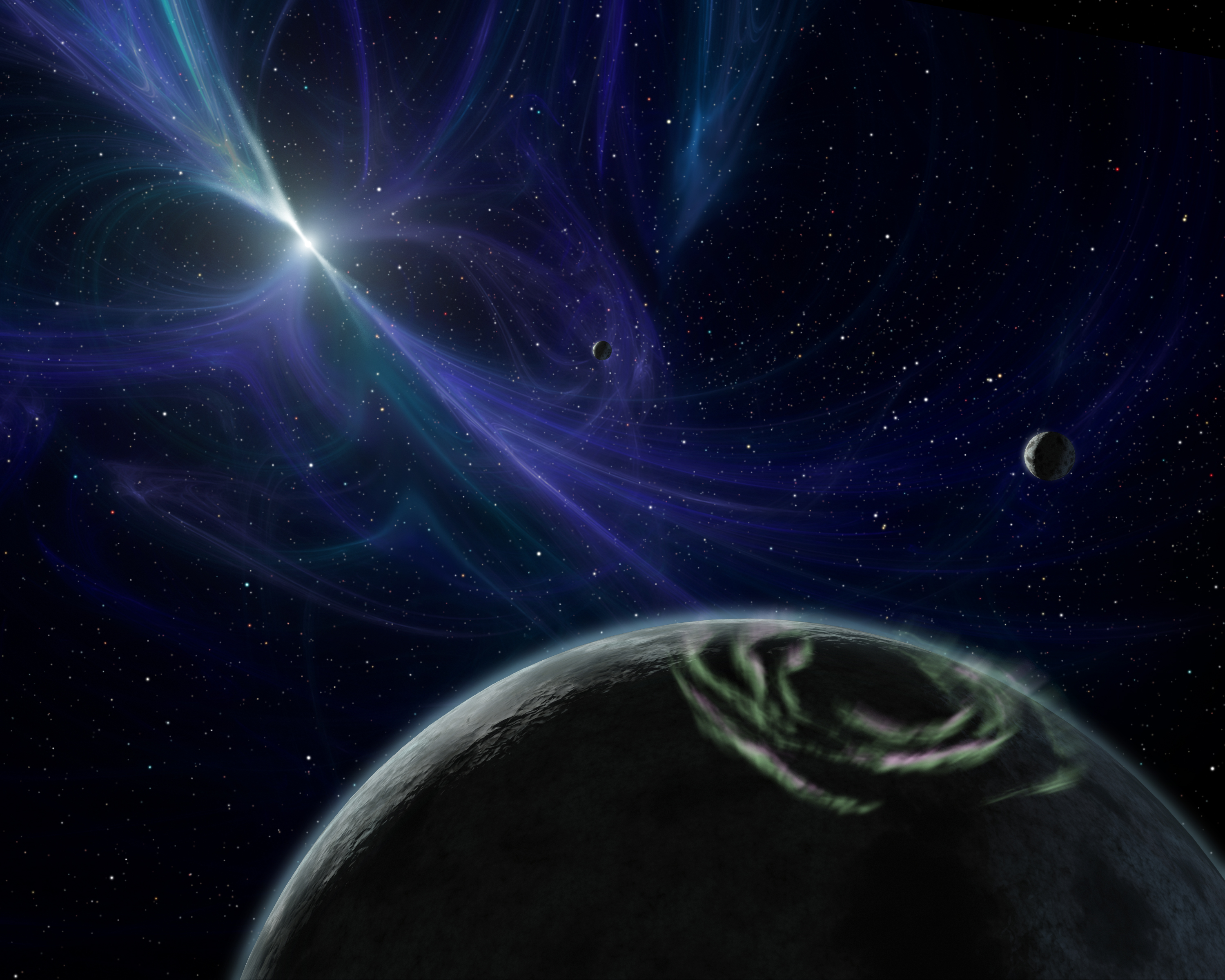Habitability Of Neutron Star Systems on:
[Wikipedia]
[Google]
[Amazon]
 The habitability of neutron star systems means assessing and surveying whether life is possible on planets and moons orbiting a
The habitability of neutron star systems means assessing and surveying whether life is possible on planets and moons orbiting a
 The habitability of neutron star systems means assessing and surveying whether life is possible on planets and moons orbiting a
The habitability of neutron star systems means assessing and surveying whether life is possible on planets and moons orbiting a neutron star
A neutron star is the collapsed core of a massive supergiant star, which had a total mass of between 10 and 25 solar masses, possibly more if the star was especially metal-rich. Except for black holes and some hypothetical objects (e.g. white ...
.
A habitable planet
Planetary habitability is the measure of a planet's or a natural satellite's potential to develop and maintain environments hospitable to life. Life may be generated directly on a planet or satellite endogenously or be transferred to it from a ...
orbiting a neutron star must be between one and 10 times the mass of the Earth. If the planet were lighter, its atmosphere would be lost. Its atmosphere must also be thick enough to convert the intense X-ray radiation emanating from the parent star into heat on its surface. Then it could have the temperature suitable for life.
A magnetic field strong enough — the magnetosphere
In astronomy and planetary science, a magnetosphere is a region of space surrounding an astronomical object in which charged particles are affected by that object's magnetic field. It is created by a celestial body with an active interior dynam ...
— would protect the planet from the strong solar winds
The solar wind is a stream of charged particles released from the upper atmosphere of the Sun, called the Stellar corona, corona. This Plasma (physics), plasma mostly consists of electrons, protons and alpha particles with kinetic energy betwee ...
. This could preserve the planet's atmosphere for several billion years. Such a planet could have liquid water on its surface.
A Dutch research team published an article on the subject in the journal ''Astronomy & Astrophysics'' in December 2017.
See also
*Habitability of red dwarf systems
The habitability of red dwarf systems is presumed to be determined by a large number of factors from a variety of sources. Modern evidence indicates that planets in red dwarf systems are unlikely to be habitable, due to their low stellar flux, ...
* Habitability of K-type main-sequence star systems
K-type main-sequence stars may be the candidates for supporting extraterrestrial life. These stars are known as "Goldilocks stars" as they emit enough radiation in the non- UV ray spectrum to provide a temperature that allows liquid water to exis ...
* Habitability of natural satellites
The habitability of natural satellites is a measure of their potential to sustain life in favorable circumstances. Habitable environments do not necessarily harbor life. Natural satellite habitability is a new area that is significant to astr ...
* ''Dragon's Egg
''Dragon's Egg'' is a 1980 hard science fiction novel by American writer Robert L. Forward. In the story, Dragon's Egg is a neutron star with a surface gravity 67 billion times that of Earth, and inhabited by cheela, intelligent creatures ...
'' and its sequel '' Starquake'', novels by Robert L. Forward
Robert Lull Forward (August 15, 1932 – September 21, 2002) was an American physicist and science fiction writer. His literary work was noted for its scientific credibility and use of ideas developed from his career as an aerospace engineer. He ...
, about life on a neutron star itself.
References
Planetary habitability Neutron stars Astrobiology {{Exoplanet